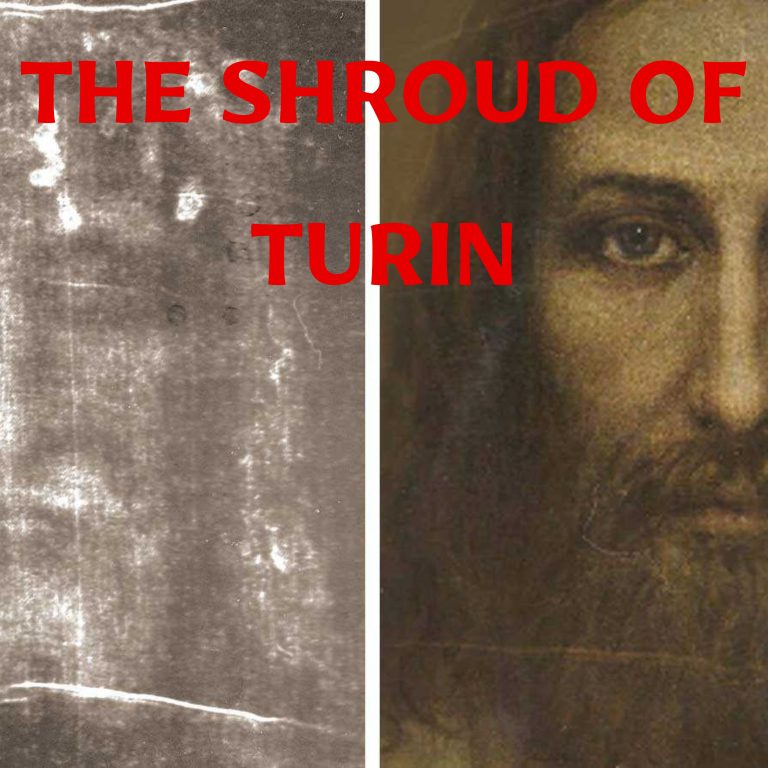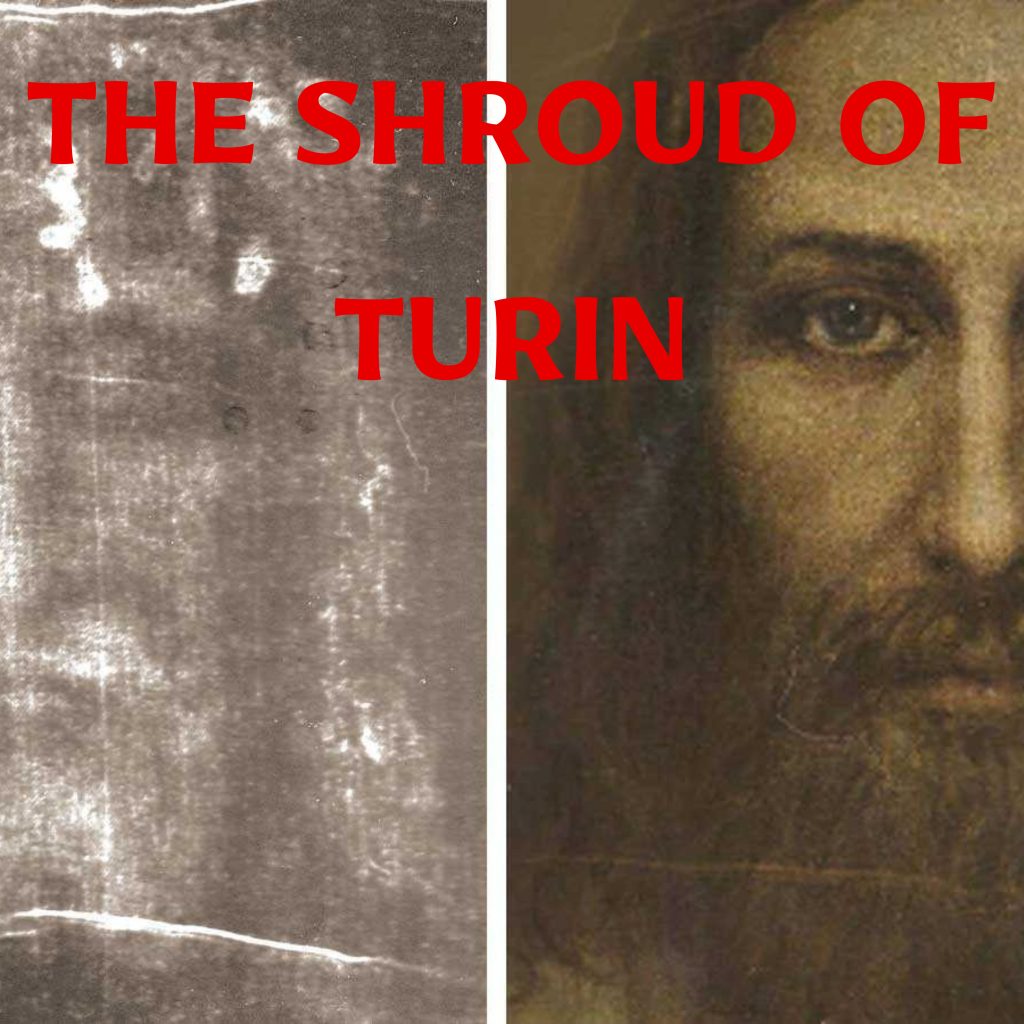
This show will get to the bottom of all those questions you need answers to. Each week we will cover a topic that has been left out in the public square unattended and covered with questions from the “official story” You will be able to determine on this show if the topic has been deemed a “Conspiracy” or a “Conspiracy Theory”.
The Shroud of Turin, a centuries-old linen cloth believed by many to be the burial shroud of Jesus of Nazareth, has long been a subject of fascination, debate, and controversy. On today's we will delve into the historical, scientific, and theological dimensions of the Shroud, examining its origins, characteristics, and the ongoing discourse surrounding its authenticity. By exploring a variety of perspectives, this paper aims to provide a comprehensive overview of the Shroud of Turin and contribute to the understanding of its significance in religious and scientific contexts. The Shroud is a rectangular cloth, measuring approximately 4.4 x 1.1 meters. It contains the faint, brownish image of the front and back view of a naked man with his hands folded across his groin. The man is depicted with a beard, mustache, and shoulder-length hair parted in the middle. He is muscular and tall (about 5 ft. 7 in. to 6 ft. 7 in. in height). The image is more visible in black-and-white negative than in its natural sepia color. The negative image was first observed in 1898 on the reverse photographic plate of amateur photographer Secondo Pia, who was allowed to photograph it while it was being exhibited in the Turin Cathedral.
Website – http://www.bottomofthat.com
Instagram – @bottomofthat
https://www.instagram.com/bottomofthat
Facebook – @bottomofthat
https://www.facebook.com/bottomofthat
X – @bottomofthat
https://twitter.com/bottomofthat
TikTok – @bottomofthat
https://www.tiktok.com/@bottomofthat
Email – truth@bottomofthat.com

The Shroud of Turin – is a centuries-old linen cloth that bears the image of a crucified man, a man that millions believe to be Jesus of Nazareth. It is one of the most studied and controversial artifacts in human history.
Description and Image: The Shroud is a rectangular cloth, measuring approximately 4.4 x 1.1 meters. It contains the faint, brownish image of the front and back view of a naked man with his hands folded across his groin. The man is depicted with beard, mustache, and shoulder-length hair parted in the middle. He is muscular and tall (about 5 ft. 7 in. to 6 ft. 7 in. in height). The image is more visible in black-and-white negative than in its natural sepia color. The negative image was first observed in 1898 on the reverse photographic plate of amateur photographer Secondo Pia, who was allowed to photograph it while it was being exhibited in the Turin Cathedral.

Claims of Authenticity and Dating: There is much debate about the age and authenticity of the Shroud. For centuries, believers have thought the cloth to be the burial shroud of Jesus. Skeptics have proposed various scientific explanations for its origin and features. Radiocarbon dating tests in 1988 dated a corner piece of the shroud from the Middle Ages, between the years 1260 and 1390. However, some have challenged this testing, claiming that the sample may have been contaminated or not representative of the whole cloth.
- Radiocarbon Dating (1988): The most significant scientific attempt to date the Shroud was carried out in 1988. Small samples of the cloth were cut from a corner and sent to three independent laboratories in Oxford, Zurich, and Arizona, which used radiocarbon dating methods to determine the age of the linen. This technique measures the decay of carbon-14, a radioactive isotope, to estimate the age of organic materials. The results from all three labs were consistent, indicating that the linen of the Shroud was woven between 1260 and 1390 AD. This dating suggests that the Shroud is not old enough to have been the burial cloth of Jesus, who is believed to have died around 30 AD.
- Controversies and Criticisms of the Radiocarbon Dating:
- Sample Contamination: Some proponents of the Shroud’s authenticity argued that the sample used for radiocarbon dating was contaminated. They suggested that newer material might have been used to repair the cloth in the Middle Ages, skewing the dating results. This view is supported by some textile experts who examined the weave and stitching patterns and found differences between the sample area and the rest of the cloth.
- Bioplastic Coating Theory: Another theory proposed that a bioplastic coating (microbial contamination) on the Shroud’s fibers could have skewed the radiocarbon dating, making the cloth seem younger than it actually is.
- Inconclusive Results: Some researchers assert that the 1988 tests were inconclusive and that more comprehensive, less invasive testing methods should be used to re-examine the Shroud.
- Alternative Dating Methods and Studies:
- Pollen and Image Analysis: Studies of pollen grains and floral images on the Shroud suggest that it could have originated in the Middle East, aligning with the belief that it was in Jerusalem before being moved to Europe.
- Historical Texts and Artistic Representations: Some researchers have tried to trace the Shroud’s history through historical texts and artistic representations that predate the medieval period. However, there is no direct and universally accepted evidence linking the Shroud to any artifacts or descriptions before the 14th century.
- Scientific Community’s Stance: Despite the controversies, many in the scientific community accept the 1988 radiocarbon dating results. They argue that the proposed hypotheses about contamination and alternative histories lack sufficient empirical evidence and that the radiocarbon dating is the most reliable indicator of the cloth’s age.
- Church’s Position: The Catholic Church has not taken an official position on the authenticity of the Shroud as the burial cloth of Christ. While it encourages devotion and interest in the Shroud, it emphasizes that such veneration should be based on faith rather than scientific evidence.
Other historical artifacts claimed to be from Jesus
- The Sudarium of Oviedo: This is a bloodstained cloth, kept in the Cathedral of San Salvador, Oviedo, Spain. It is said to be the cloth that covered the head of Jesus after his death, as mentioned in the Gospel of John (20:6-7). The Sudarium contains bloodstains and fluid from pulmonary edema. Some studies have found correlations in bloodstain patterns between the Sudarium and the Shroud of Turin, suggesting they could have covered the same person. 260px-Santo_Sudario_Oviedo.jpg 13.7 KB View full-size Download
- The Veil of Veronica: According to tradition, this cloth bears the face of Jesus, not made by human hands. The story goes that a woman, later identified as Veronica, wiped Jesus’ face with her veil during his journey to Calvary, and his image was miraculously imprinted on the cloth. The Veil of Veronica has been linked with several different relics throughout history, and its authenticity and existence are subjects of debate. The most famous of these relics was kept in St. Peter’s Basilica in Rome, but its current whereabouts are uncertain.
- The Holy Lance (Spear of Destiny): While not a cloth, this is another significant relic related to the Passion of Christ. The Holy Lance is alleged to be the spear that pierced Jesus’ side as he hung on the cross, as described in the Gospel of John (19:34). Several relics claimed to be the Holy Lance exist in different locations, including in Rome, Vienna, and Echmiadzin in Armenia, each with its own history and followers.
- The Crown of Thorns: Said to have been placed on Jesus’ head before his crucifixion, the Crown of Thorns is another relic with blood significance. The most famous of these relics was kept in the Notre-Dame Cathedral in Paris until the 2019 fire, after which it was moved for safekeeping.
- The Holy Robe of Trier: Also known as the Seamless Robe of Jesus, it is said to be the robe worn by Jesus during or before his crucifixion. According to the Gospel of John (19:23-24), this robe was seamless, woven in one piece. It is preserved in the Trier Cathedral in Germany. The Robe, like other relics, has been an object of veneration and pilgrimage.
Sudarium of Oviedo:
- Description and Location: The Sudarium of Oviedo is a small piece of cloth measuring approximately 84 x 53 cm. Unlike the Shroud of Turin, the Sudarium does not bear a full body image. Instead, it is said to be stained with blood and bodily fluids. The cloth is kept in a special chest in the Cámara Santa (Holy Chamber) of the Cathedral of San Salvador in Oviedo, Spain.
- Biblical Reference: The existence of such a cloth is mentioned in the Gospel of John (20:6-7), where it is described as the cloth that was placed on Jesus’ head in the tomb, separate from the burial shroud.
- History and Tradition: According to tradition, the Sudarium was in Jerusalem until the 7th century. To protect it from the Persian invasion in 614 AD, it was allegedly moved first to Alexandria and then across North Africa to Spain. It is believed to have been in Oviedo since the 8th century.
- Physical Characteristics:
- The cloth is heavily soiled with stains and is said to contain blood as well as pulmonary edema fluid, which would be consistent with someone who suffered from asphyxiation, like crucifixion.
- Forensic analysis has indicated that the blood is of the AB type, the same type found on the Shroud of Turin.
- Correlation with the Shroud of Turin:
- Studies have compared the bloodstain patterns on the Sudarium with those on the Shroud of Turin. Some researchers claim that the patterns on the two cloths are compatible, suggesting that they could have covered the same person.
- However, these studies are subject to debate, and there is no universal agreement in the scientific community regarding their conclusions.
Physical and Chemical Analysis: Numerous scientific analyses have been conducted on the Shroud. These include studies of pollen grains found on the cloth, which could suggest the geographical history of the Shroud, and the analysis of the image itself. The image’s formation remains a mystery, with characteristics that some researchers claim are not reproducible by known methods of image production.
Historical Records: The first certain records of the Shroud begin in the 14th century in France. Its history prior to this time is unclear and subject to speculation. Some believe the Shroud was in existence and venerated in various locations before the 14th century, but there is no definitive historical evidence to confirm this.
Religious Significance and Cultural Impact: Regardless of its authenticity, the Shroud of Turin remains an object of deep religious devotion for many and has a significant place in Christian culture. It continues to be a subject of intense interest, debate, and research, drawing both religious believers and scientific investigators.
Current Location: The Shroud is currently housed in the Cathedral of Saint John the Baptist in Turin, Italy. It is rarely displayed to the public, making such events notable and attracting large numbers of pilgrims and visitors.
Recent Developments: Research and debate about the Shroud continue, with new studies and technologies applied to analyze its properties and origins. These include high-resolution 3D analysis and attempts to replicate the image using modern techniques.


